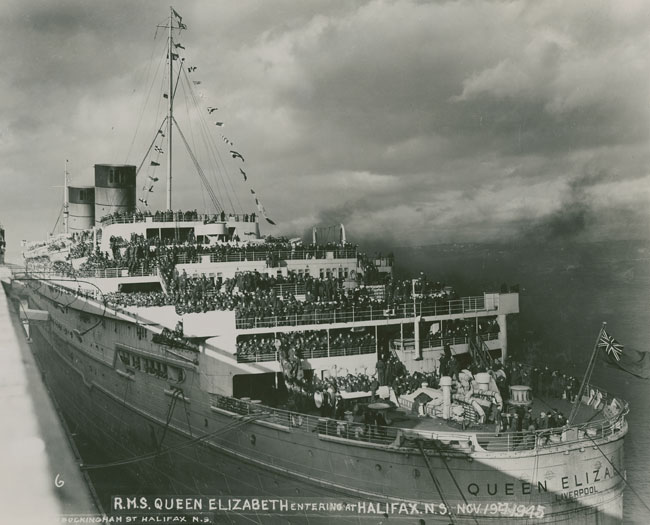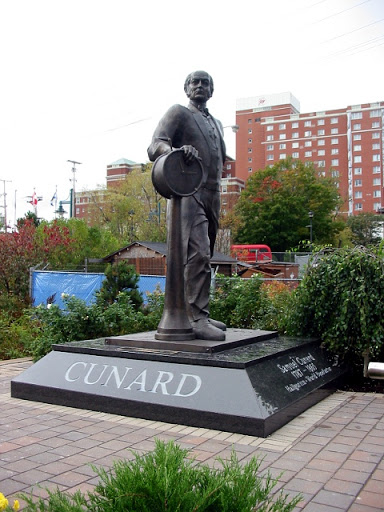The #Cunard name is a famous one in #NovaScotia thanks to shipping magnate Samuel Cunard who established the Cunard Line.
Read this thread to learn about his involvement in #NS' mining industry!
#nspoli #cbpoli #CapeBreton @cunardline @NS_Museum @ns_mma

Read this thread to learn about his involvement in #NS' mining industry!
#nspoli #cbpoli #CapeBreton @cunardline @NS_Museum @ns_mma


Samuel Cunard, born in #Halifax in 1787, established the Cunard Line, which operated the first regular Atlantic steamship service that carried mail between England and North America.
#nspoli #cbpoli #CapeBreton @cunardline @NS_Museum @ns_mma
#nspoli #cbpoli #CapeBreton @cunardline @NS_Museum @ns_mma

His shipping empire eventually included famous ships such as the Queen Mary and Queen Elizabeth and still operates today as a cruise line.
But Cunard had other business interests, including mining.
#nspoli #cbpoli #CapeBreton @cunardline @NS_Museum @ns_mma
But Cunard had other business interests, including mining.
#nspoli #cbpoli #CapeBreton @cunardline @NS_Museum @ns_mma

In 1826, he made a proposal to Lieutenant Governor James Kempt to lease the #CapeBreton coal mines for 30 years at £6,000 per year plus a royalty.
Unfortunately for #Cunard, his proposal was turned down and later that year King George IV granted his brother, Prince Frederick...
Unfortunately for #Cunard, his proposal was turned down and later that year King George IV granted his brother, Prince Frederick...

...the Duke of York, all mineral rights in #NovaScotia that had not previously been granted. These rights were, in turn, given to the General Mining Association (GMA), a company formed by Rundell, Bridge and Rundell (RBR), the Royal Goldsmiths from 1797-1843.
#nspoli #cbpoli
#nspoli #cbpoli

The Duke of York, who was known for his free-spending ways, was heavily indebted to RBR. He gave them the mineral rights in exchange for clearing his debts and 25% of the GMA's profits.
#nspoli #cbpoli #CapeBreton #novascotia
#nspoli #cbpoli #CapeBreton #novascotia

The GMA quickly developed coal operations at Albion Mines, a town it founded and which was renamed #Stellarton in 1870.
#nspoli #cbpoli #CapeBreton #novascotia
#nspoli #cbpoli #CapeBreton #novascotia

#CapeBreton wasn’t part of #NovaScotia when the mineral rights grant was first conceived under the previous king, George III, so the GMA had to negotiate with the Crown for Cape Breton’s mineral rights. It then developed mines in the #SydneyMines area.
#nspoli #cbpoli #CapeBreton
#nspoli #cbpoli #CapeBreton

Always looking for opportunities, #Cunard won the contract to provide wharf space in #Halifax for the GMA in 1827.
At first Richard Smith, a mining engineer from England, acted as general agent and superintendent of operations for the GMA in #NovaScotia.
#nspoli #cbpoli
At first Richard Smith, a mining engineer from England, acted as general agent and superintendent of operations for the GMA in #NovaScotia.
#nspoli #cbpoli

However, the GMA’s monopoly was resented by many Nova Scotians, including business people prevented from pursuing opportunities in coal mining, so the GMA appointed Cunard as their local business agent and a director of the company in 1834...
#nspoli #cbpoli #novascotia
#nspoli #cbpoli #novascotia

...thereby turning a potential enemy into an ally.
As an elite member of #NovaScotia’s business community, #Cunard was highly-respected and influential in Nova Scotia’s political circles. The GMA had many good years in NS under his leadership.
#nspoli #cbpoli #CapeBreton
As an elite member of #NovaScotia’s business community, #Cunard was highly-respected and influential in Nova Scotia’s political circles. The GMA had many good years in NS under his leadership.
#nspoli #cbpoli #CapeBreton

In 1856 public pressure on #NovaScotia’s legislative assembly resulted in a delegation being sent to England asking that the mineral rights given to the Duke of York be rescinded. NS' legislative assembly passed a bill in 1858 that repealed them, ending the GMA’s monopoly. 

The GMA still remained influential for many years until it sold the last of its assets to the Dominion Coal Company and the #NovaScotia Steel and Coal Company in 1900.
In 1847, Frederick Douglass, an escaped American slave who became a leader in the movement...
#nspoli #cbpoli
In 1847, Frederick Douglass, an escaped American slave who became a leader in the movement...
#nspoli #cbpoli

...to abolish slavery, bought a first class ticket on the Cunard ship “the Cambria” to travel back to the US from England after a speaking tour. He was refused entry by a Cunard employee and found that the berth he had paid for had been given to someone else.
#nspoli #cbpoli
#nspoli #cbpoli

Rather than delay his travel plans, he agreed to remain in segregation for the voyage.
#Cunard apologized to Douglass when he learned of the incident and wrote:
#nspoli #cbpoli #CapeBreton #novascotia
#Cunard apologized to Douglass when he learned of the incident and wrote:
#nspoli #cbpoli #CapeBreton #novascotia

“No one can regret more than I do the unpleasant circumstances respecting Mr. Douglass’s passage; but I can assure you that nothing of the kind will again take place in the steam-ships with which I am connected.”
#nspoli #cbpoli #CapeBreton #novascotia
#nspoli #cbpoli #CapeBreton #novascotia

Check out our post from yesterday to see how Samuel Cunard’s son, William, played a key role in the 1861-62 #gold rush at #TheOvens!
#nspoli #cbpoli #CapeBreton #novascotia

#nspoli #cbpoli #CapeBreton #novascotia


• • •
Missing some Tweet in this thread? You can try to
force a refresh



























